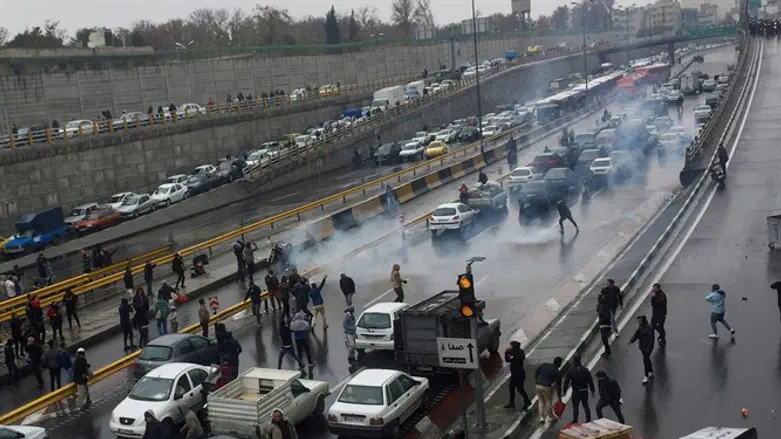
The New York Times on Sunday published a report on the latest unrest in Iran, saying that at least 180 people were killed and possibly hundreds more in the crackdown on the protests.
The unrest erupted on November 15, hours after it was announced that the price of gas would rise to 15,000 rials per liter (12 US cents) from 10,000 for the first 60 liters, and to 30,000 rials for any extra fuel bought after that each month.
Amnesty International says at least 146 demonstrators were killed across Iran after its leaders ordered security forces to stamp out protests, but that number is believed to be higher. It is difficult to obtain official numbers in large part due to the fact that the Iranian regime blocked access to the internet during the crackdown.
The New York Times report, which was based on witness accounts and videos, says security forces responded to the protests by opening fire on unarmed protesters, largely unemployed or low-income young men between the ages of 19 and 26. In the southwest city of Mahshahr alone, witnesses and medical personnel said, Islamic Revolutionary Guards Corps members surrounded, shot and killed 40 to 100 demonstrators — mostly unarmed young men — in a marsh where they had sought refuge.
“The recent use of lethal force against people throughout the country is unprecedented, even for the Islamic Republic and its record of violence,” said Omid Memarian, the deputy director at the Center for Human Rights in Iran, a New York-based group.
Altogether, from 180 to 450 people, and possibly more, were killed in four days of intense violence after the gasoline price increase was announced on November 15. At least 2,000 wounded and 7,000 detained, according to international rights organizations, opposition groups and local journalists.
The last enormous wave of protests in Iran, which took place in 2009 after a contested election in which President Mahmoud Ahmadinejad was re-elected, was also met with a deadly crackdown and left 72 people dead over a much longer period of about 10 months.
Iran blamed the unrest on "thugs" backed by its foreign enemies, including the US, Israel and the People's Mujahedeen of Iran, an exiled armed opposition group it considers a "terrorist" cult.
Last week, Iranian Supreme Leader Ayatollah Ali Khamenei claimed his country had foiled a "very dangerous" plot in the violent demonstrations.
Iran’s Revolutionary Guards arrested about 100 leaders of the protests and said they would act to severely punish them.
Iranian Vice-President Eshaq Jahangiri warned regional countries of “dire consequences” if it is proven that they meddled to stoke unrest in Iran.
